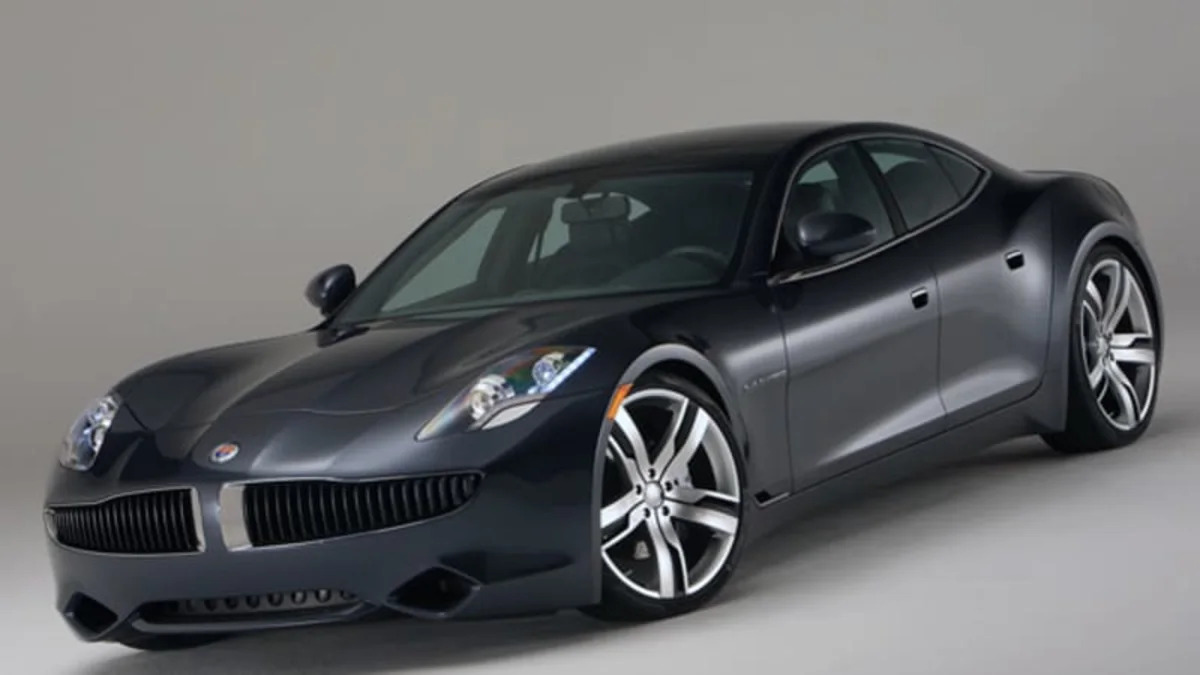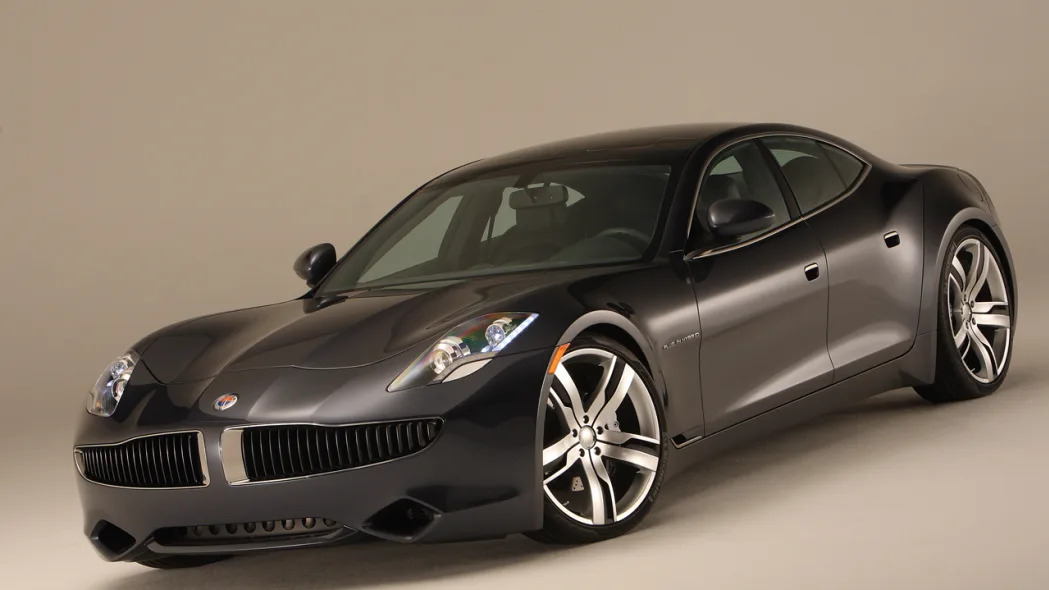Fisker Karma - Click above for high-res image gallery
The miles per gallon rating of a vehicle that can get energy from an electrical outlet is a difficult thing to accurately calculate and get the public to accept. Just ask AFS Trinity, with their "150 mpg" SUVs, or GM with its 230 mpg number for the Chevy Volt. Still, it's valuable to have some sort of number to compare vehicles against one another, and Fisker Automotive has released the first such numbers for its Karma plug-in luxury hybrid: 3.5 liters per 100 kilometers (equivalent to 67.2 mpg U.S.) and CO2 emissions of just 83 grams per kilometer.
Fisker is basing these numbers on SAE methodology for measuring emissions for PHEVs. We're trying to confirm this with Fisker, but we think this means the J1711 methodology, about which you can read more here or in this PDF. (UPDATE: It's actually J2841) In any case, Fisker says that the Karma's CO2 emissions will be, on average, "less than that of today's cleanest production cars and 75 percent less than that of competing vehicles." If the company meets its ambitious goal of selling 15,000 Karmas a year starting when it goes on sale next year and then through 2016, they estimate that 248 million gallons of gasoline will be saved.
[Source: Fisker]
PRESS RELEASE:
FISKER KARMA EMISSIONS, ECONOMY ESTIMATED AT 83G CO2/KM, 3.5L/100KM
Stylish plug-in hybrid sedan cleaner, more efficient than today's best
Fisker Karma002_LoResIRVINE, CA - September 8, 2009: The Fisker Karma plug-in hybrid electric vehicle will emit just 83g CO2/km and have an economy rating of 3.5L/100km, according to SAE methodology measuring emissions for plug-in hybrids.
Making its German debut at the Frankfurt Motor Show next week, the four-door Karma will be one of the cleanest, most fuel-efficient cars in the world, but will still offer world-class style and performance.
Calculations developed by the Society of Automotive Engineers (SAE) estimate carbon dioxide output will be less than that of today's cleanest production cars and 75 percent less than that of competing vehicles, on average. SAE is an internationally recognized organization of experts that help drive government automotive policy.
Some 941 million liters (248 million gallons) of gasoline could be saved and 2.3 million metric tons (2.5 million US tons) of CO2 offset from sales of 15,000 Karmas per year through 2016. Still, with 403hp and more torque than many supercars, 0-100km/h (62mph) takes about six seconds and maximum speed is 201km/h (125mph).
"The Fisker Karma is the future of driving," said Henrik Fisker, CEO. "It proves we can drive environmentally responsible cars without sacrificing the emotional things that made us fall in love with cars in the first place."
Fueling the Karma could cost just €0.02/km ($0.03/mile), consuming as little as 21 kilowatt hours per 100km in its electric-only Stealth mode, according to SAE methodology. However, a real-world annual average would be closer to €0.05/km ($0.07/mile) based on a mix of Stealth and Sport (gasoline) mode use. Actual economy and emission results will vary depending on individual driving habits and usage requirements.
In Stealth mode -- engaged on demand via steering wheel-mounted paddle switches -- the Karma can be driven into the growing number of traffic-restricting Low Emissions Zones (LEZ) across Europe. Some 70 cities and towns in eight European countries have opted for LEZs, including Berlin, Stuttgart, London and Amsterdam.
The Karma will be the first production Plug-in Hybrid Electric Vehicle (PHEV) when it goes on sale in 2010. Its exclusive Q-DRIVE® powertrain is expected to deliver an emission-free 80km (50mi) per full charge of its 22kWh/200kW Lithium-ion battery, and a total extended range of more than 480km through the use of its gasoline powered engine/generator.
Fisker Automotive is poised to benefit immensely as support from countries around the world for clean vehicles increases. For example, the US has announced its intention to put 1 million plug-in hybrid cars on its roads by 2015. Germany recently unveiled an action plan to have 1 million electric cars on its roads by 2020. Japan wants electric vehicles to make up half of all vehicle sales within a decade.
ABOUT FISKER AUTOMOTIVE, INC.
Fisker Automotive is a privately owned, premium American car company with a vision to lead the automotive industry into the next-generation of automobiles with high-end design expertise and eco-friendly powertrain technology. Global headquarters are in Irvine, California, USA.
The company was created in 2007 to leverage the design capabilities of Fisker Coachbuild, LLC, founded by auto design veterans Henrik Fisker and Bernhard Koehler, and the PHEV powertrain capabilities of Quantum Fuel Systems Technologies Worldwide, Inc. (NASDAQ-QTWW), a major Tier 1 supplier of clean vehicle technologies to the automotive OEMs. Previously, Fisker, CEO, was design director for Aston Martin and president and CEO of BMW's DesignworksUSA. Koehler, COO, led design operations at Ford, Aston Martin and BMW.
Fisker Automotive's first car is the Fisker Karma, the world's first production Plug-in Hybrid Electric Vehicle (PHEV). The four-door Karma will be followed by two variants and a second line of lower cost, high volume premium green automobiles by 2012.



Sign in to post
Please sign in to leave a comment.
Continue